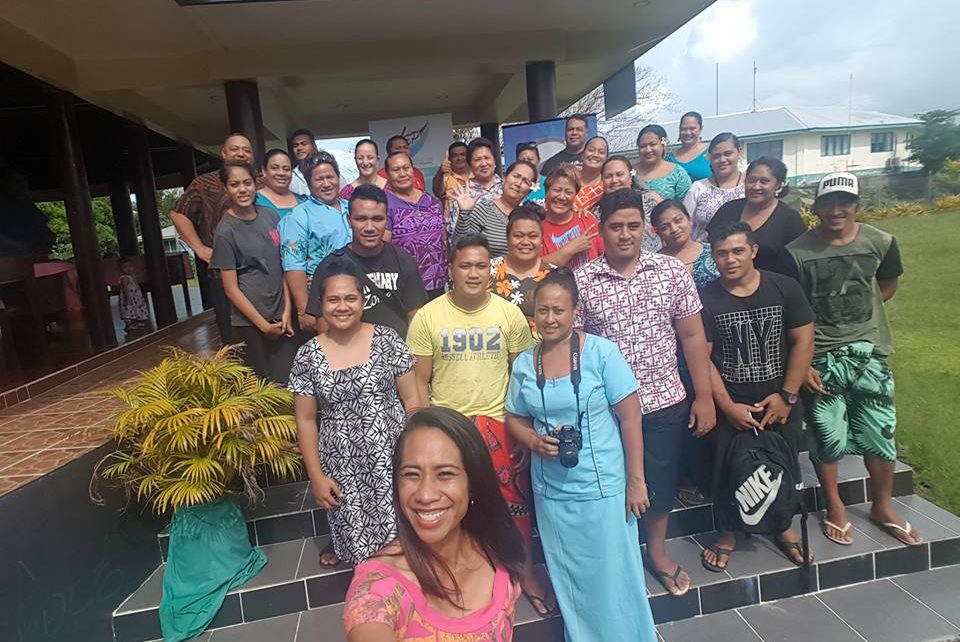Context: Samoa’s population is roughly 191,000, with approximately 68 per cent of this figure represented by the working age population (those 15 to 65 years of age). The current economic conditions indicate that the pillar of the Samoan economy continues to be remittances (averaging 22 per cent of GDP over the past two decades). Important sectors include services and tourism, though the majority of Samoans still work informally in subsistence agriculture.
The youth population in Samoa, as defined in the national policy, is aged 18 to 35, and represents 22 per cent of the total population. Samoa’s national unemployment rate stands at a 5.6 per cent, while the youth unemployment rate is significantly higher at 16.4 per cent. Other issues include a large number of school dropouts and a high degree of skills mismatch, leading to compromises in the school-to-work transition.
Implementation of programme/ initiative: The Internship Programme is a joint initiative involving the Samoa Chamber of Commerce; the One-UN Youth Employment Programme (which also provides funding), working through the Ministry of Women, Community and Social Development; and the Samoa National Youth Council. The Programme focuses on vulnerable youth with little to no qualifications; it affords them the opportunity to gain practical experience and adds value to their personal and professional development.
Main challenges: Some of the key challenges noted in the implementation of the Programme include:
- The capacity of implementing agencies to carry out regular follow up visits/inspections to interns’ workplaces so as to regularly track progress.
- The interns’ ability to commit to 10 weeks of the programme; some interns leave the Programme before completion due to personal issues.
- The interns’ ability to understand the principles of an internship programme, notably the arrangement of allowances.
- Matching employers to interns who are flexible in meeting the hours required, including in the context of shift work.
- The Programme does not have the capacity to offer comprehensive skills-focused trainings to interns entering the workforce.
Results achieved: The Internship Programme has completed two phases. The first covered the period December 2016 to February 2017, and in which 15 businesses and organizations n Upolu employed a total of 17 interns. This phase ended with 2 interns securing full-time jobs at their respective work placements, while 3 were given part-time roles.
The second phase covered June 2017 until September 2017, and saw an increase in the total number of interns to 49, as selection also included Savaii. Of the interns, 33 were from Upolu and 16 from Savaii. To improve on the results of the first phase, the second phase of the Programme included a 2-day orientation plan carried out by the Chamber of Commerce Project Team, in which interns were given training on work ethics, soft skills and financial literacy; this resulted in 57 per cent of the interns securing full-time jobs (16 in Upolu and 12 in Savaii).
Moving Forward: The Chamber needs longer commitment and direct resourcing by donor partners since it received minimal support to run the Programme. The majority of funding goes to the government counterpart, and the Chamber is expected to provide its services and support free of charge. In sum, proper resourcing is needed to ensure the sustained success of the Internship Programme and provide more employment opportunities to unemployed youth and youth seeking to be entrepreneurs.
Replicability: Some of the core issues that have contributed to the success the Internship Programme, and can act as lessons for other initiatives, have so far included: a good working relationship between implementing agencies; improved orientation structure to include a 2-day training programme on soft skills and work ethics; and the active involvement of the Samoa Chamber of Commerce in rallying support from employers.
References:
- Ministry of Women, Community and Social Development, “Samoa National Youth Policy 2016-2020”
- ILO, “Samoa National Action Plan on Youth Employment” http://www.ilo.org/suva/countries-covered/samoa/lang–en/index.htm
- MCIL, SNEP, http://www.mcil.gov.ws/images/2016/WebsitePDF/signedcopyofsNEPdocument.pdf
- Samoa Chamber of Commerce & Industry Inc. http://www.samoachamber.ws/
- https://www.facebook.com/samoachamberofcommerce/
Project Details
Date: June 12, 2018
